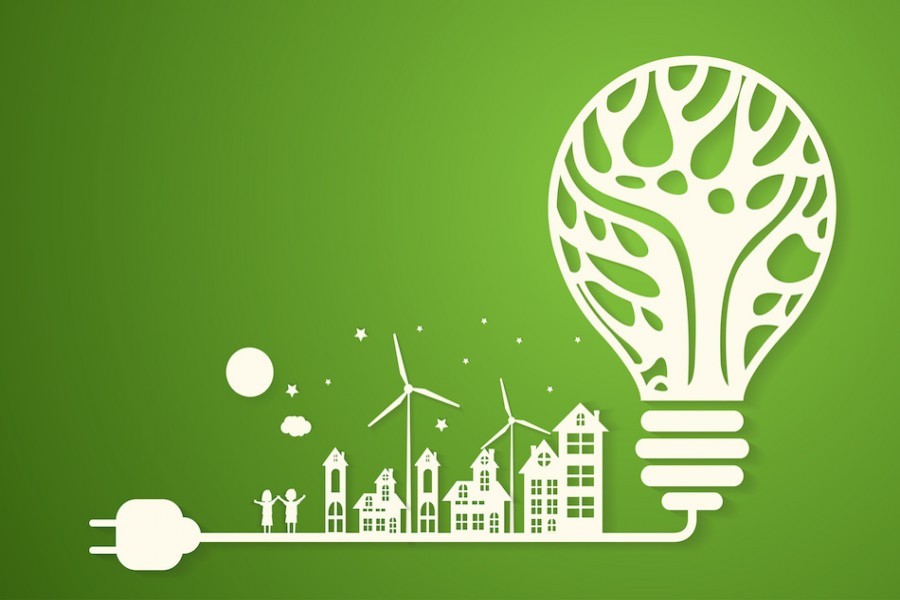It’s about a decade since green lending began in Bangladesh aligning the country with the global progression of climate financing. By the end of the 2000s, large-scale local industries were familiar with the what-s and whys of toxic emissions. At that time, Bangladesh witnessed a boost of industrial growth, entering global markets; hence it was a challenge to harmonise the contradictions between rapid industrial growth and environmental sustainability. Moreover, lack of insurance products on repayment security is a major constraint in building financiers’ confidence in climate financing. That still not a single financial institution is fully dedicated to environmental financing despite a huge market opportunity could be attributed to this constraint among others.
Bankability is a major checkpoint for the success of energy efficiency (EE) projects. While a short payback period is desirable, most EE projects become unattractive due to a longer repayment term in comparison to conventional technology. As an example, EE lighting projects are becoming popular due to its short payback time. The major reason behind this popularity might be the ‘simplest nature’ of the projects. The fact is, simple projects share a minimum carbon saving compared to large-scale capital intensive projects. But to contribute to the reduction of the carbon footprint in bulk, mega-scale EE projects should be considered.
In a country like ours, there is a shortage of capital intensive EE projects and that’s due to lack of risk mitigation measures. Investors as well as financial institutions don’t feel much confident in the ROI (return-on-investment) perspective. Moreover, institutional and technical risk allocations are also not structured to make big investments lucrative. Here comes the scope of energy efficiency insurance (EEI) that absorbs the underperformance risk of EE projects to alleviate these investment barriers.
Let’s see how EEI works. EEI insures the financial performance of energy savings of projects. The EEI programme removes barriers to energy investments by mitigating project risks and building investor confidence through four instruments: a standard performance contract, energy savings insurance, savings validation, and financing. Parties of the performance contract are - Technology Provider (equipment supplier) and Project Company. The contract guarantees the performance of the project in terms of energy savings, backed by an insurance policy. The validation is to be carried out by an independent entity with capability and experience in energy project certification. Against validation certificates, EEI insures a threshold energy-saving i.e. financial return to secure EE investments. And all these instruments are combined as a risk mitigation tool for commercial lenders.
The EEI Model is suitable for both energy efficiency (EE) and distributed generation (DG) projects such as large scale solar PV power generation plants. As regards other projects except for EE, the model can be termed “Energy Saving Insurance,” or “Energy Efficiency Protect”. In fact, globally these terms are already in practice. The EEI is the same as it in all cases to secure an investment return through insuring energy saving. This insurance product guarantees energy savings or energy generation for a period of time sufficient to recover the investment. This model applies both to projects of equipment replacement with more efficient ones and to new installations.
Though such an innovative product is very new for us, it is already being practiced in different countries like Mexico, Colombia, El Salvador, Nicaragua, Brazil, and Peru. It has also raised interest in China, Vietnam, Mongolia, the Caribbean, Chile, Mauritius, Turkey, and India, our neighbouring country. This is considered an integral part of EE investment’s risk mitigation tool for a specialised climate financier.
As a fast-growing economy, it is high time to think about such an advanced solution to boost the potentiality of climate financing among local lenders, as we all can sense the days of conventional energy are numbered — conventional energy may see its end within a few years. To sync with the global energy trend, we have to think and re-think about our energy transition plans. And as a key player, local lenders should be at the same pace as international platforms, where similar insurance programmes can act as a sectoral catalyst in the local market.
The writer is a passionate banker, a climate financing expert, and an energy auditor. He can be reached at [email protected].


